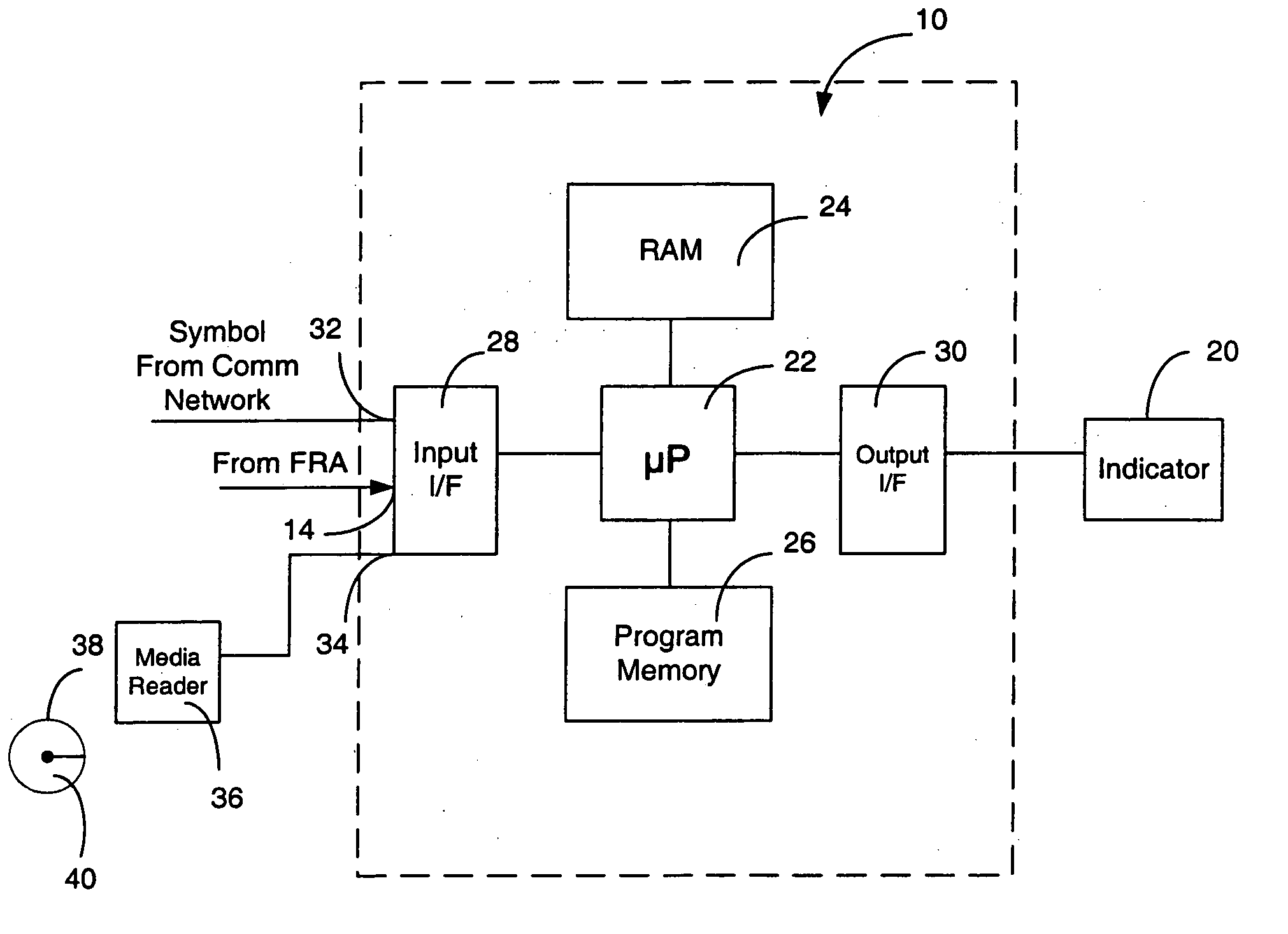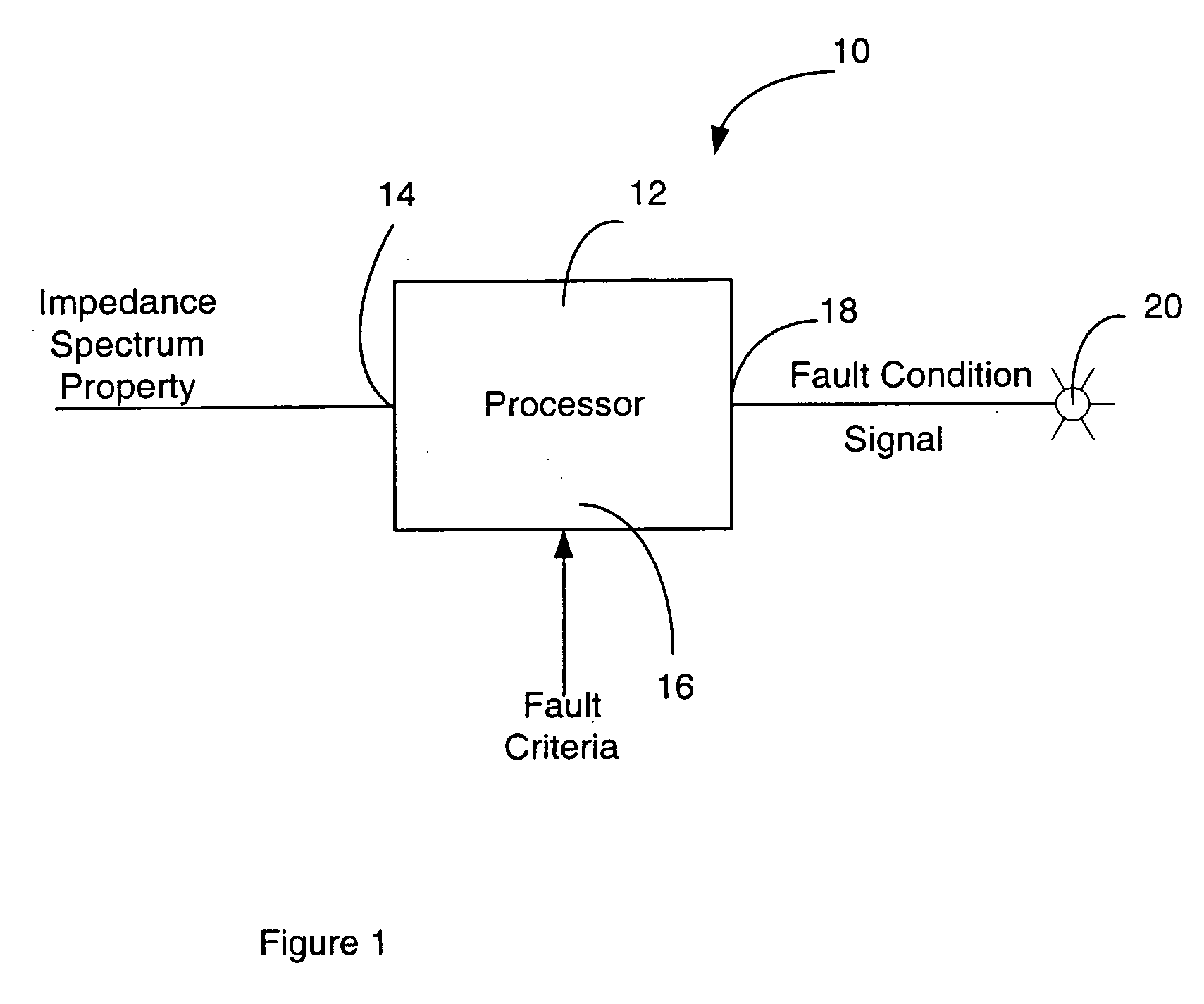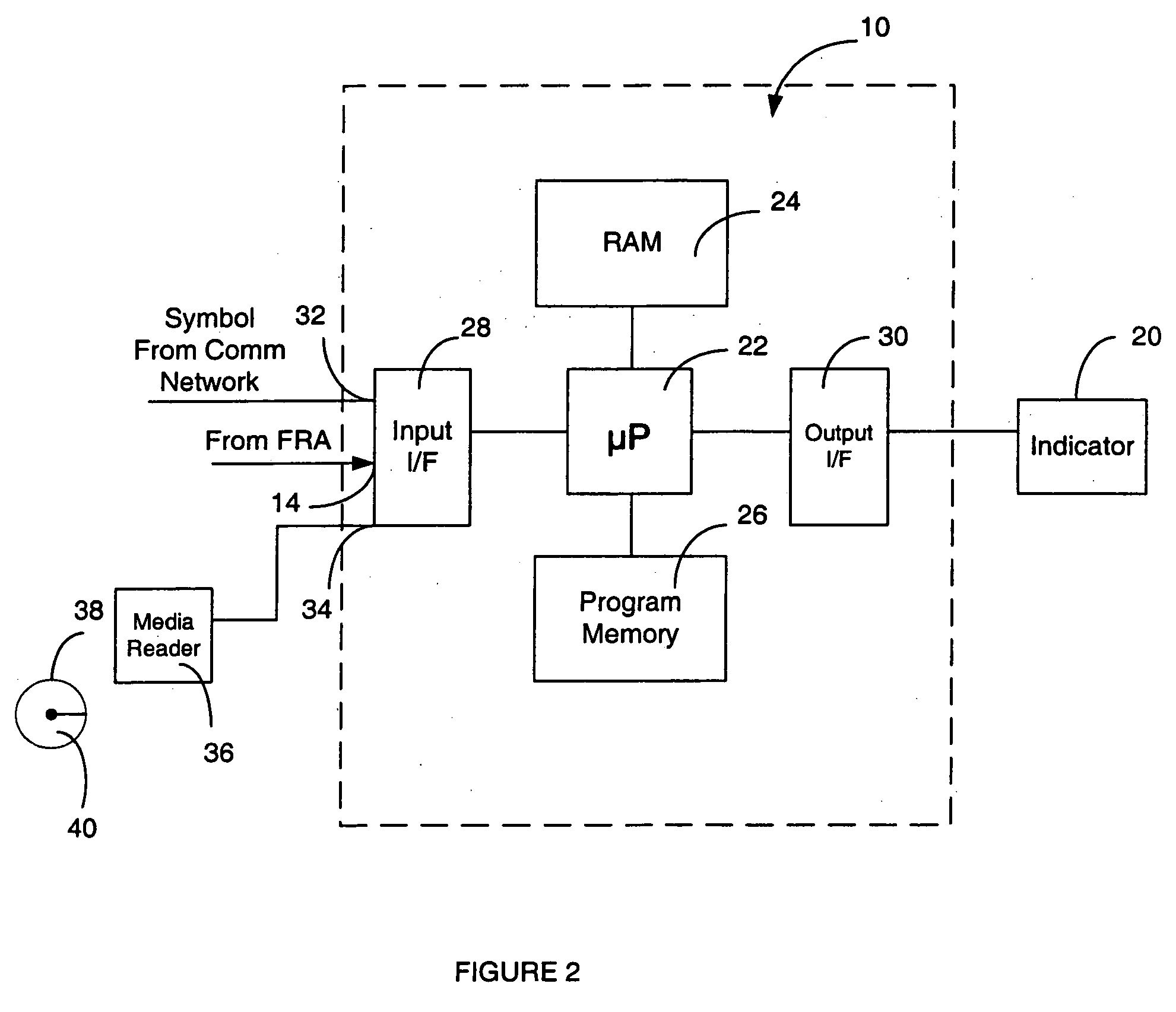Methods and apparatus for indicating a fault condition in fuel cells and fuel cell components
a technology of fuel cells and fault conditions, applied in the direction of fuel cells, fuel cell auxiliaries, instruments, etc., can solve the problems of limited conversion of all fuels, negative impact on cell performance, and limited practical systems
- Summary
- Abstract
- Description
- Claims
- Application Information
AI Technical Summary
Problems solved by technology
Method used
Image
Examples
Embodiment Construction
[0053] Referring to FIG. 1, an apparatus for indicating a fault signal in a fuel cell, according to a first embodiment of the invention, is shown generally at 10. In this embodiment the apparatus includes a processor 12 having an input 14 for receiving an impedance spectrum property and has a second input 16 for receiving fault criteria. The processor also has an output 18 at which it produces a fault condition signal indicating a specific fault condition when the property of the impedance spectrum received at the input 14 meets the criteria received at the input 16. The fault condition signal may be a simple on / off signal used to control an indicator lamp such as shown at 20, for example. In general, the fault condition signal may be used to control any type of annunciator for alerting an operator of a fault condition or may be used to initiate a process for alerting an operator.
[0054] By appropriate input of fault criteria and appropriate input of an impedance spectrum property, t...
PUM
 Login to View More
Login to View More Abstract
Description
Claims
Application Information
 Login to View More
Login to View More - R&D
- Intellectual Property
- Life Sciences
- Materials
- Tech Scout
- Unparalleled Data Quality
- Higher Quality Content
- 60% Fewer Hallucinations
Browse by: Latest US Patents, China's latest patents, Technical Efficacy Thesaurus, Application Domain, Technology Topic, Popular Technical Reports.
© 2025 PatSnap. All rights reserved.Legal|Privacy policy|Modern Slavery Act Transparency Statement|Sitemap|About US| Contact US: help@patsnap.com



